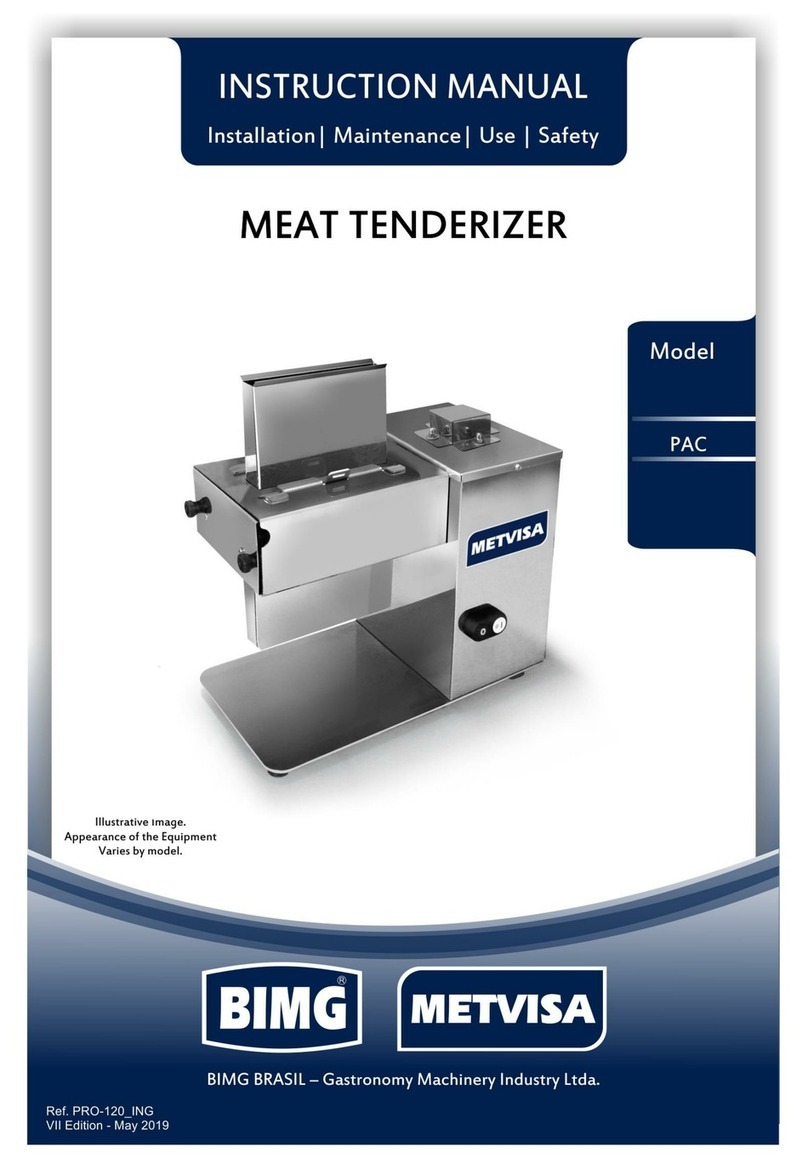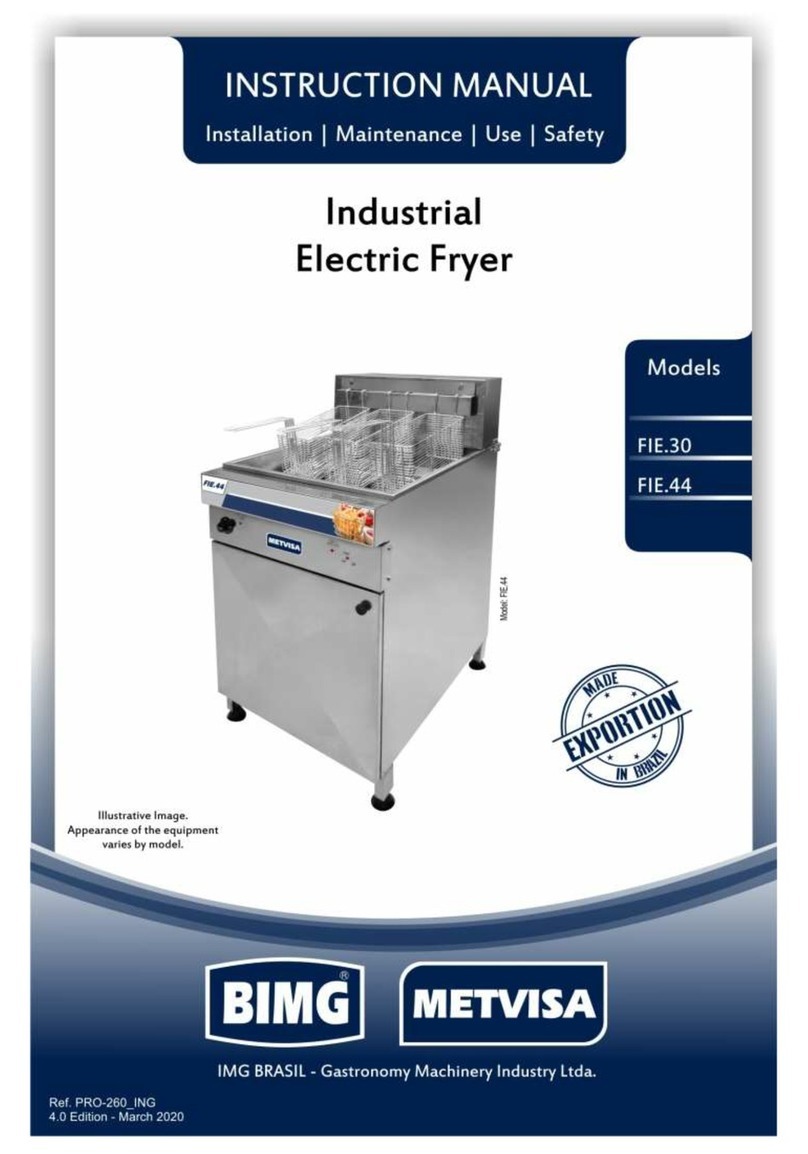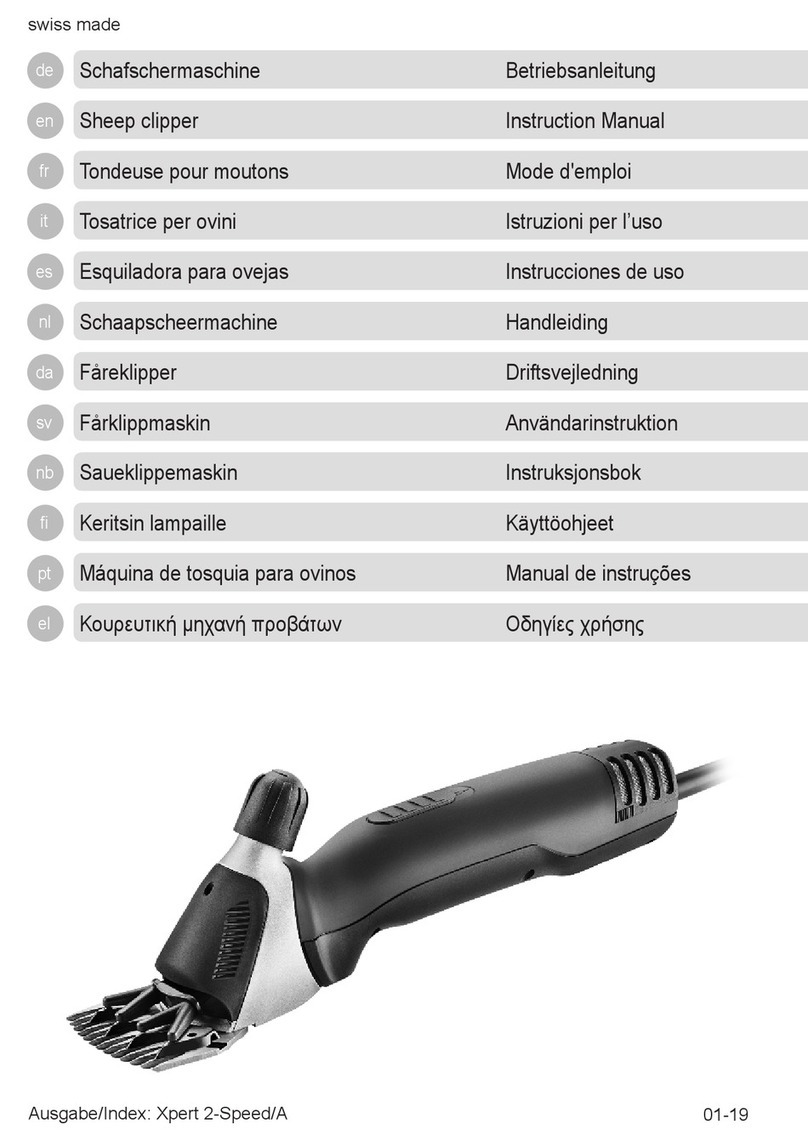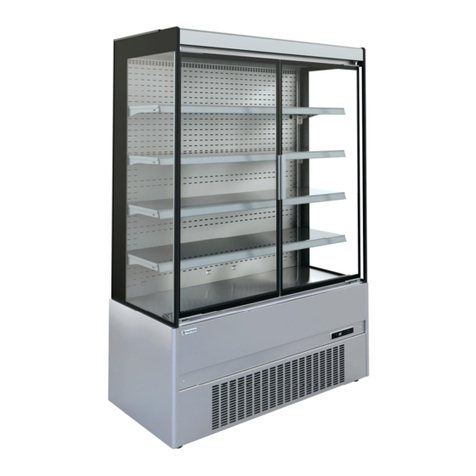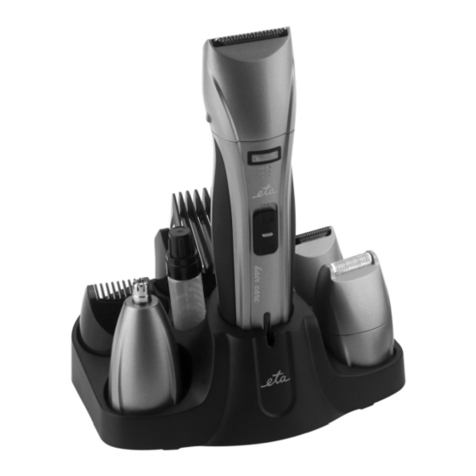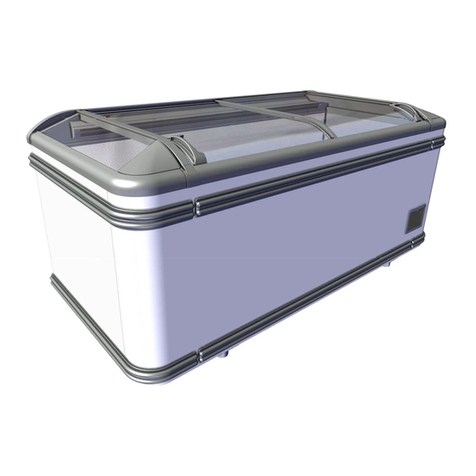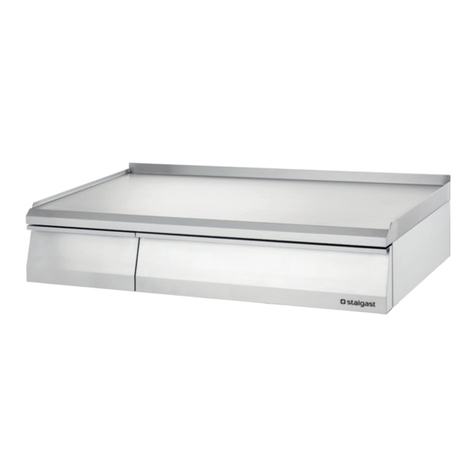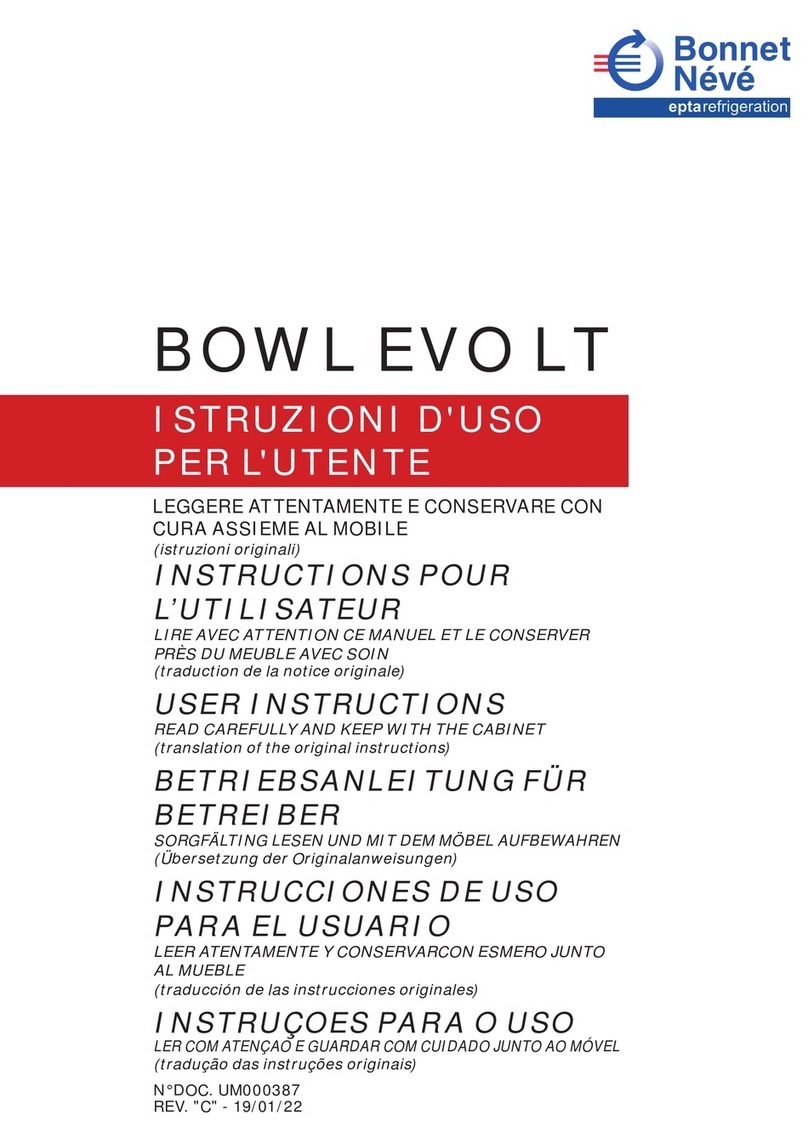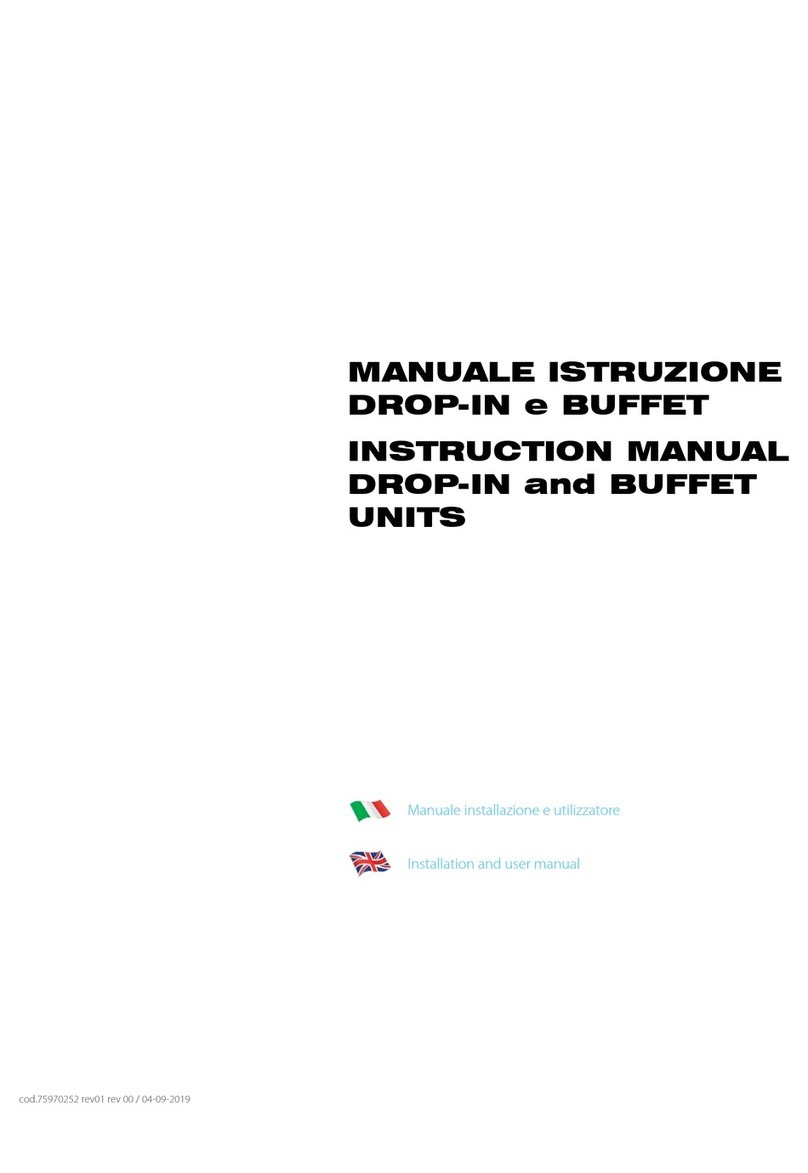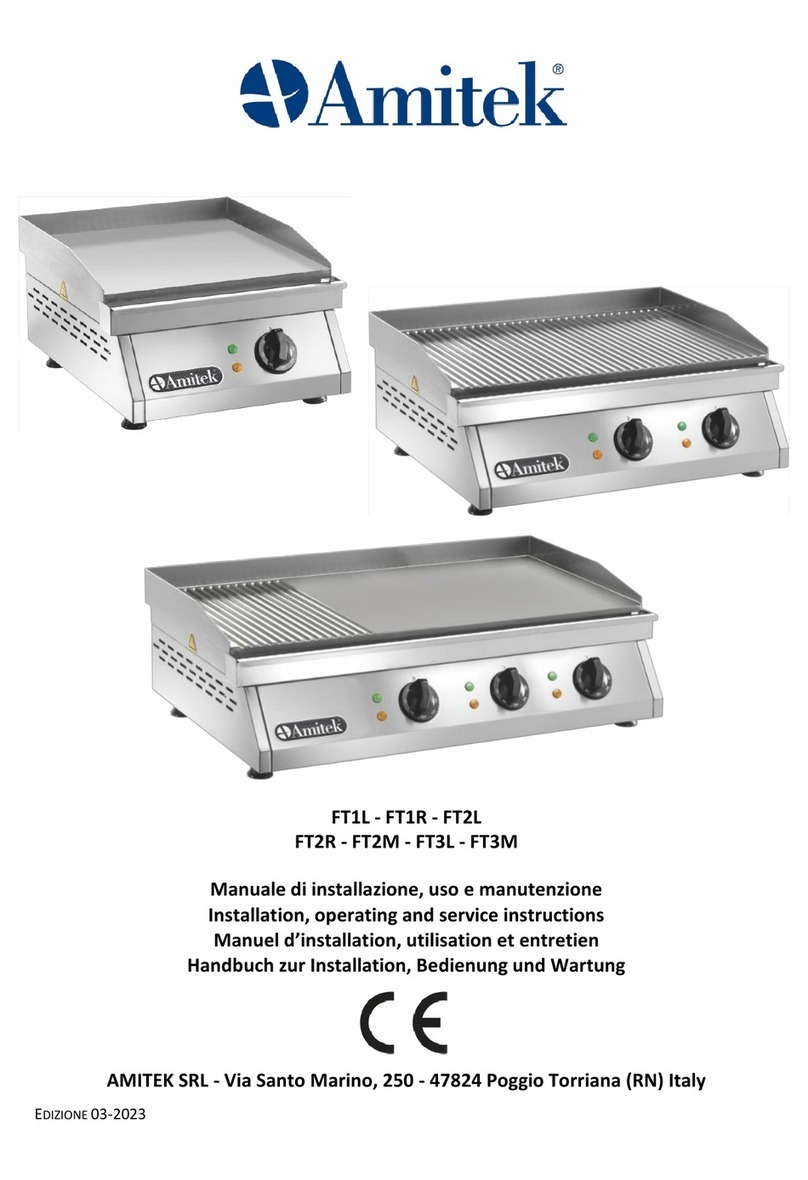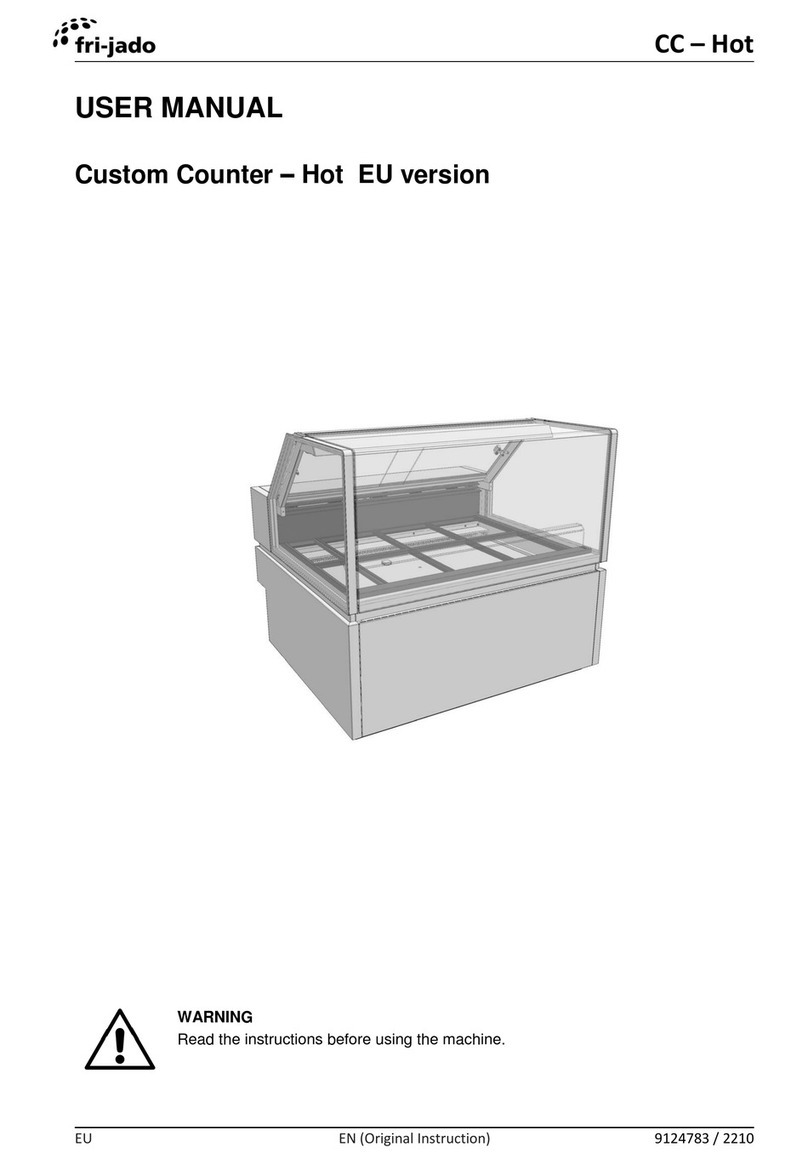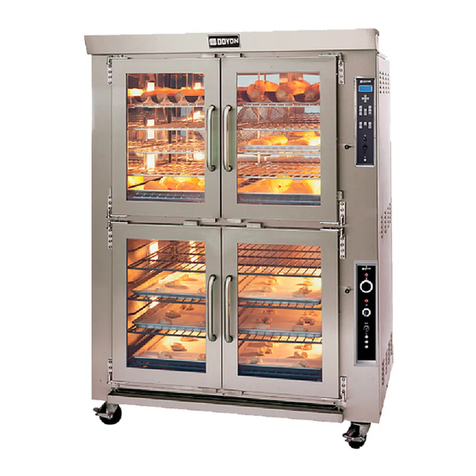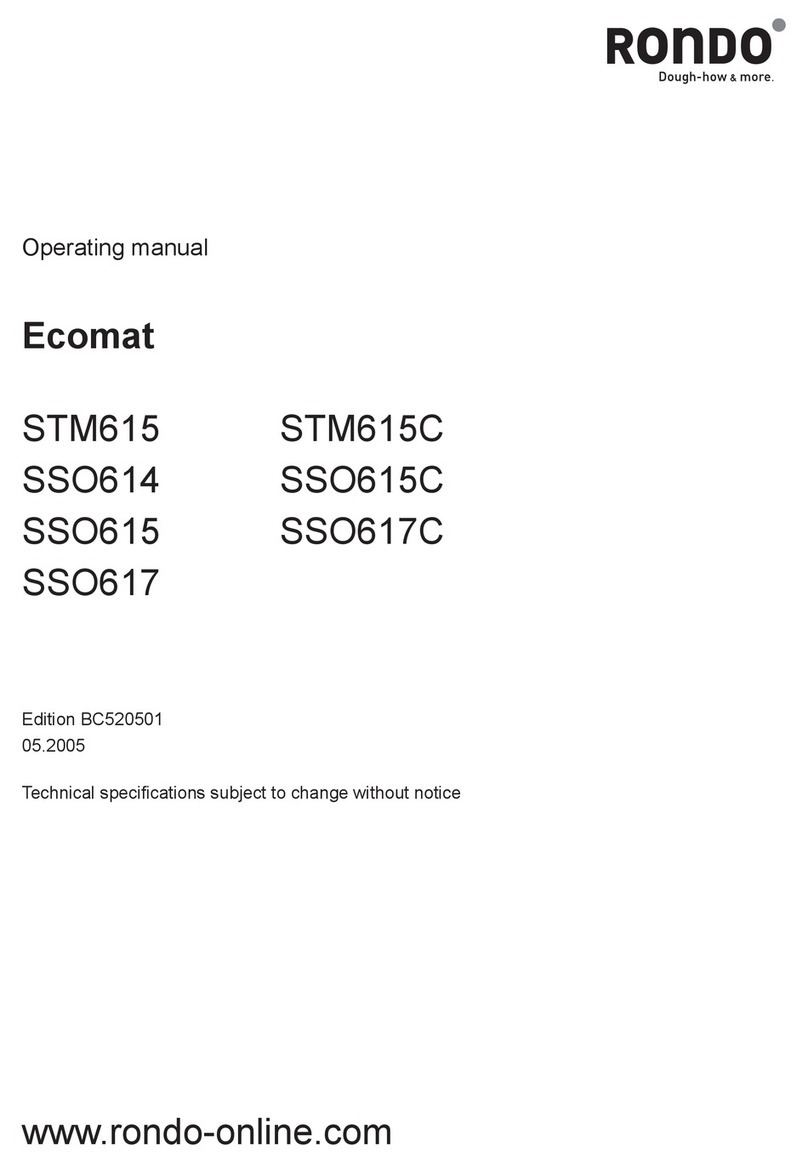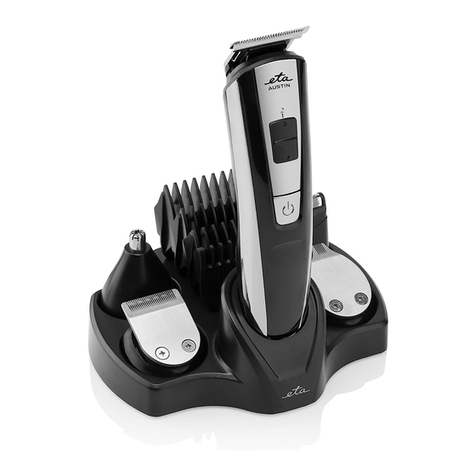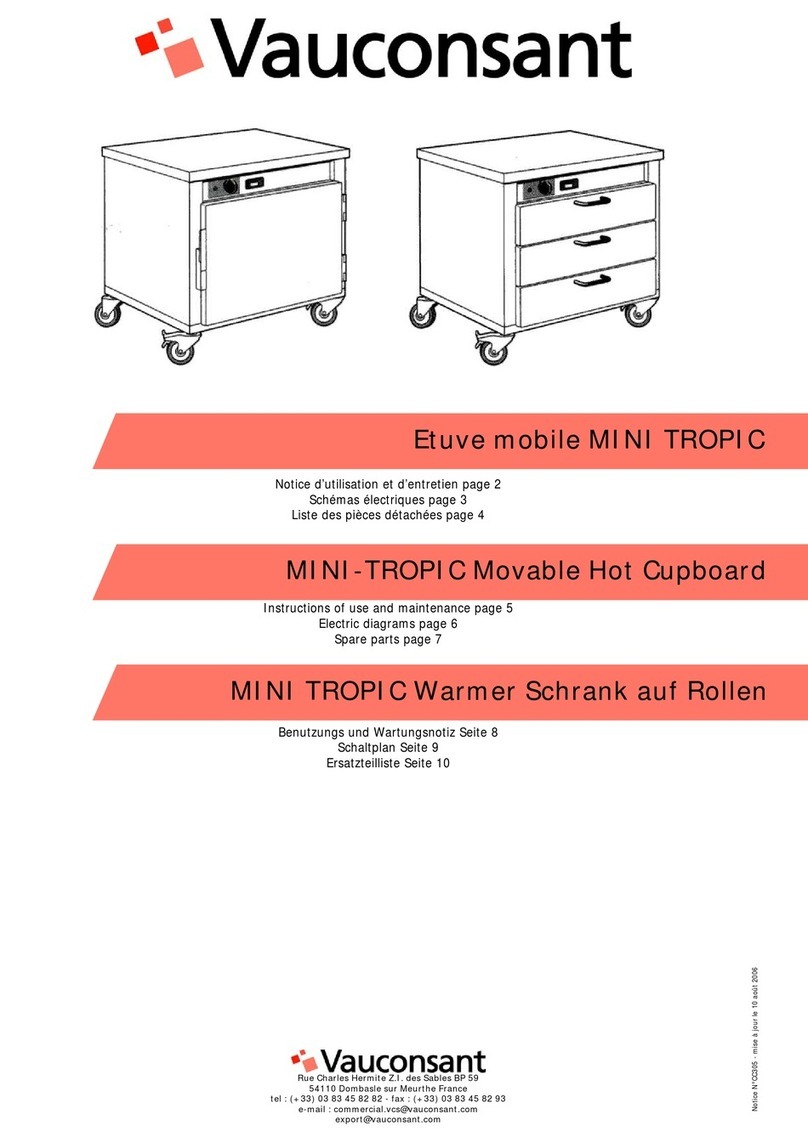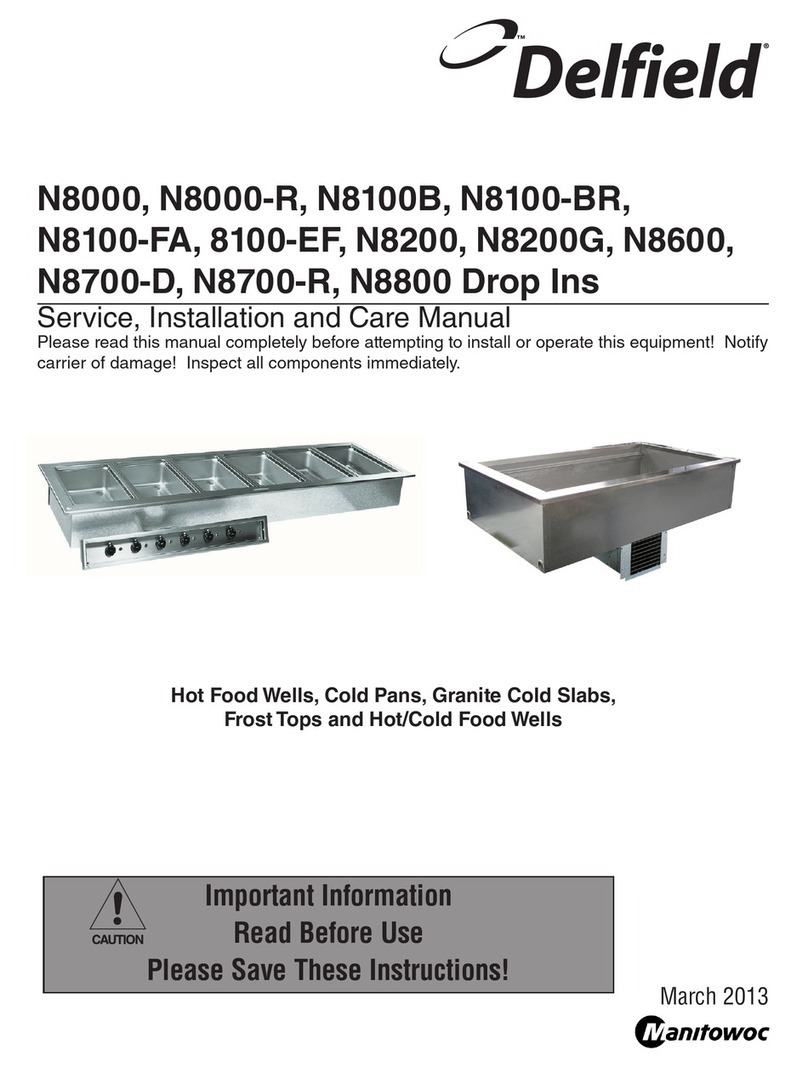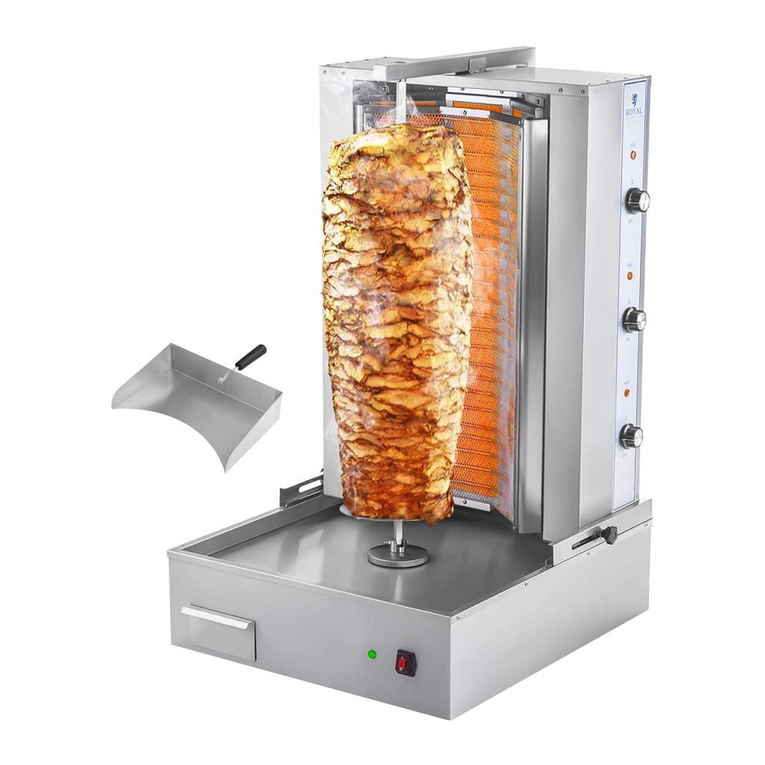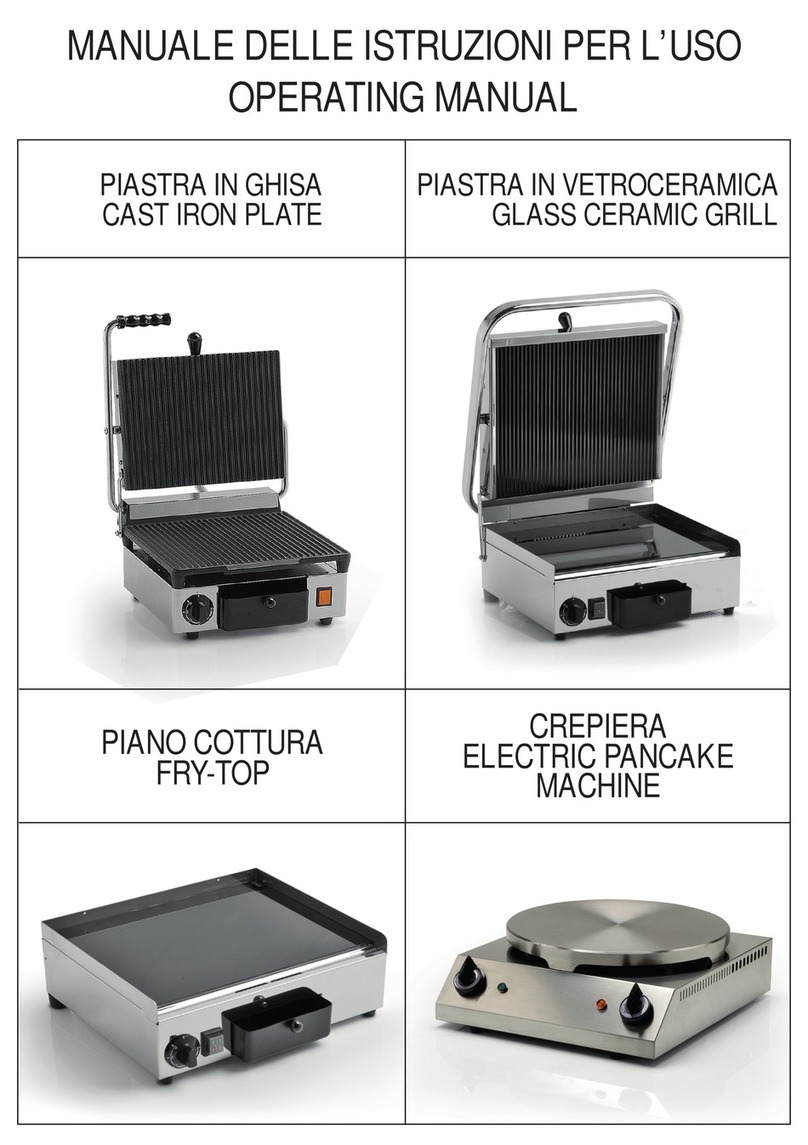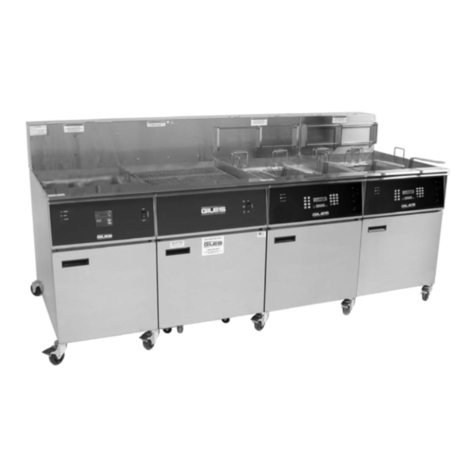METVISA CFH.300 Series User manual

1

2
CONGRATULATIONS,
You have just purchased a IMG-BRASIL equipment, product of the highest quality, safety
and efficiency.
Founded in 1989, IMG-BRASIL is a respected company as one of the best and most
complete companies in the field of gastronomy equipment manufacturing.
Constant innovation and improvement of its products, using top-of-line raw materials, ensure
superior products consumed in Brazil and in more than 25 countries worldwide.
THE RELIABILITY AND CERTAINTY OF A GOOD PRODUCT ARE IN THE NAME
IMPORTANT:
PRODUCT FOR PROFESSIONAL USE. DO NOT USE BEFORE READING THE MANUAL CAREFULLY.
IN CASEOF QUESTIONS,PLEASECONTACTUS:
:
IMG-BRASIL Gastronomy Machinery Industry Ltda.
CNPJ 11.193.347/0001-14 - CREA 131726-3
Road. Antônio Heil –KM 23 Nº 5825 –Neighborhood: Limoeiro –ZIP CODE 88352-502
Brusque –SC –Brasil
Phone/fax. +55 47 3251-5555 - Site: www.metvisa.com.br
Mail: sac@metvisa.com.br -export@metvisa.com.br

3
INDEX
1. Safety Information......................................................................................................................... 4
1.1 General Warnings...................................................................................................................... 4
1.2 Mechanical Safety ..................................................................................................................... 5
1.3 Electrical Safety......................................................................................................................... 6
2. Technical Characteristics............................................................................................................. 6
2.1 Main Components...................................................................................................................... 6
2.2 Technical Data........................................................................................................................... 7
3. Installation..................................................................................................................................... 8
3.1 Equipment Layout...................................................................................................................... 8
3.2 Electrical Connection................................................................................................................. 9
3.3 Safety Procedures and User Instruction................................................................................... 10
4. Equipment Use............................................................................................................................ 11
4.1 Utility........................................................................................................................................ 11
4.2 Commands.............................................................................................................................. 11
4.3 Operating Procedures.............................................................................................................. 12
5. Cleaning and Maintenance ......................................................................................................... 15
5.1 Cleaning Procedures and Products Used................................................................................ 15
5.2 Breakdown Maintenance and Procedures................................................................................ 17
5.3 Prolonged Interruption in Use of Equipment............................................................................. 19
6. Problem Analysis and Resolution.............................................................................................. 19
6.1 Problems, possible causes and solutions ................................................................................ 19
7. Lifetime of the Equipment and Components............................................................................. 20
8. ANNEXES..................................................................................................................................... 21
Electrical Schematic –Voltage 110 V or 220 V.............................................................................. 21
Exploded View............................................................................................................................... 22
Spare Parts ................................................................................................................................... 24
ATTENTION!
The characteristics, pictures and figures presented in this manual should be considered for
information. IMG BRASIL reserves the right to make such modifications as may be deemed
necessary without prior notice.

4
1. Safety Information
1.1 General Warnings
•Cautions / precautions must be observed when installing, using, maintaining and discontinuing use
of this equipment;
•Before carrying out any operation (assembly, use, maintenance and reuse after prolonged non-use
of the equipment), read the manual carefully;
•The equipment must be used by trained people familiar with the use and safety regulations
described in this manual;
•This equipment is not intended for use by people (including children) with reduced physical, sensory
or mental capacities, or people with lack of experience and knowledge, unless they have received
instructions regarding the use of the equipment or are under the supervision of a person responsible
for their safety.
•It is recommended that children be supervised to ensure that they are not playing with the
equipment;
•In case of rotation of the people that will work with the equipment, the new operator must be
educated about the standards and the operation of the equipment;
•The operator must use the Adequate PPE (personal protective equipment). As for example: use
hair caps, preventing them from locking in the equipment's moving parts
•The operator must always be aware of situations that can cause a risk of accidents and avoid them.
For example: avoid working with loose uniform sleeves, where they can lock in moving parts, causing
accidents;
•After reading and clarifying all doubts, this manual should be carefully stored in an easily accessible
location, known to all people who will operate the equipment and make it available to those who will
carry out maintenance for any inquiries. Whenever any questions arise, be sure to check the manual.
Do not operate the equipment in any way with doubts;
•In the installation, it is essential to make this manual available to the professionals who will do the
work.
•Before starting cleaning and any type of maintenance, it is essential to disconnect the equipment
from the power supply;
•Periodically check the condition of cables and electrical parts;
•Never put your hands, fingers or objects on the cutting disc, on moving parts or in any opening with
the equipment on, as this may cause an accident;
•Do not use frozen products such as meat, chicken or fish on the bone and non-food products to cut
in the equipment;
•Do not leave the equipment turned on unattended.
ATTENTION!
Do not perform repairs on your own. Go to a service center authorized by the manufacturer.
Use only original parts in your equipment.

5
1.2 Mechanical Safety
•Never put your hands, fingers or objects on the cutting disc, on moving parts or in any opening with
the equipment on, as this may cause an accident;
•When cleaning the cutting disc, be extremely careful. The disc is very sharp and can easily cause
accidents (cuts, for example) if not handled carefully. Just clean the disk with the equipment
disconnected from the mains;
•Before turning on the equipment, make sure that the movable table has the rails perfectly fitted into
the grooves and that the bearing has been mounted in the transverse groove (see more details in
item 4.3 of this manual).
The equipment described in this manual complies with the regulation against mechanical
risk. Security is achieved with:
1. Mechanical design that makes it impossible to reach electrical parts and sharp rotating parts by
hand;
2. Structure, that protects the entire engine and electrical parts, preventing operator access and
contact with water, dust and other materials;
3. Base with protection, preventing access to moving parts, such as gear transmission sets;
4. Groove, used to guide the product to be sliced without the need for the operator to use his
hands;
5. Horizontal fastener that holds the food against the guide preventing it from moving
Vertical fastener, pushes the product against the cutting disc. Both fasteners work so that the
operator does not use his hands during the food cutting process;
6. Mobile Table, makes the cutting movement of the product automatically;
7. Non-slip Feet;
8. Sharpener and Deburring, they work so that it is not necessary to disassemble the mobile table
and the cutting disc from the equipment, making the sharpening process safer;
9. Protection of the sharpener and deburring, prevents access to the sharpening and deburring
wheels and the cutting disc when the moving table is in motion.
To view the parts described above, see the image in item 2.1 (Main Components –page 7) of this
manual.

6
ATTENTION!
Whenever any item related to the safety of the equipment is removed (such as when
cleaning or maintenance), put it back in its proper place and confirm that it is performing its
function correctly.
1.3 Electrical Safety
•Periodically check the condition of cables and electrical parts;
•If the power cord is damaged, it must be replaced with a new one. The exchange must be carried
out by the manufacturer, an authorized agent or a qualified person in order to avoid risks;
•Do not use water jets, as it may cause electric shock. To clean your equipment, follow the
instructions in item 5 of this manual;
•Do not work with the equipment in damp places, or with wet clothes and shoes. Put on proper
footwear, this will avoid electric shocks and even death;
•Place the equipment on a firm, dry and well-leveled surface;
•Never carry out any maintenance, adjustment or disassembly operations on the device while it is on.
For such procedures, make sure that it is turned off, removing the plug from the electrical outlet;
•Do not use extension cords or adapters with various other appliances connected to them. This may
cause fire or overload;
The components used for safety against electrical hazards have been selected in accordance with
applicable safety standards. Given the perfect insulation of all electrical parts and the excellent
resistance of all the materials used, this equipment is capable of carrying out the tasks it is intended
to do.
ATTENTION!
Whenever any item related to the safety of the equipment is removed (such as when
cleaning or maintenance), put it back in its proper place and confirm that it is performing its
function correctly.
2. Technical Characteristics
2.1 Main Components
For the equipment described in this manual, safety in use, cleaning, maintenance and
maximum hygiene are guaranteed by the project and special design of all parts and also by using
stainless steel and other materials suitable for contact with food.

7
The equipment was built with the following features:
•Cutting disc and drive disc, made of steel with a hard chrome surface treatment. Its design and
production guarantee perfect cutting precision.
•Movable table, rail, structure, tray, horizontal fastener and base covering are made from 430
stainless steel, which has superior corrosion resistance than other steels. It is a material resistant to
the attack of several corrosive agents;
•Vertical fastener made of ABS plastic. It is non-toxic, durable and resistant to the attack of corrosive
agents.
See below the main components of the equipment:
2.2 Technical Data
Model
Standard
Measures
Length.xHt.xWidth
(mm)
Net
Weight
(kg)
Voltage
(V)
Rate
(A)
Capacity
(slices/minute)
CFH300110M604
620x810x420
48,6
110
5,10
45*
CFH300220M501
620x810x420
46,8
220
2,8
45*
CFH300220M502
620x810x420
46,8
220
2,8
45*
CFH300220M504
620x810x420
46,8
220
2,8
45*
CFH300220M604
620x810x420
48,6
220
2,95
45*
* It may vary due to the user's working speed and according to the quality of the processed product.
Note: For exploded view with
spare parts list, see the
annexes.

8
ATTENTION!
Characteristics like: model, serial number and voltage of the equipment are provided on the
label (figure below). Before installation, check that the power supply voltage of the
equipment corresponds to that of the mains
3. Installation
3.1 Equipment Layout
Connection to the electrical main and provision for operation must be carried out by a
qualified professional. Check that the voltage of the equipment is in accordance with that of the
electrical network.
During installation, it is essential to make this manual available to the professionals who will
carry out the installation.
To ensure correct operation and safety, the equipment must be positioned in an airy
environment and on a sufficiently large, well-leveled, dry and stable support surface, away from
sources of heat and water taps, and at an average height. of 80 cm. Install your equipment leaving a
distance of at least 20 cm around it and 1 m in height, so that you have enough space for inspection,
maintenance, cleaning and use.

9
ATTENTION!
The installation and the place where the equipment will be disposed must comply with the
norms of risk prevention and safety at work (regulatory norm in force in your country).
The manufacturer does not take responsibility for any direct or indirect damages caused by
non-compliance with these rules and other instructions presented in this manual.
3.2 Electrical Connection
The equipment is supplied with a power cord to plug into an electrical outlet. If the power
cord is damaged, it must be replaced with a new one. The exchange must be carried out by the
manufacturer, authorized agent or qualified person, in order to avoid risks.
The type of plug on the power cord varies by country. The installation of the equipment must
be carried out by a technician qualified for this function and observing the current regulations in the
country, especially with regard to grounding connection (if applicable).
Also included with the equipment is an equipotential grounding terminal, located at the rear
of the base covering.

10
The terminal identified in the figure aside is an additional protection to the
grounding that is provided for in the electrical network, it must be connected
to a grounding terminals, regardless of the connection to the electrical
network, and the other products that have accessible metallic parts, and that are stationary,
must also be connected to this bus as well as the service bench itself, if it is made of
metallic material. In this way, all these products will be under the same electrical potential,
avoiding undesirable leakage currents.
The equipment described in this manual is single-phase and single voltage, 110 V or 220 V.
If you need to change the voltage of your equipment, please contact the manufacturer or authorized
dealer.
ATTENTION!
Before turning on your equipment, always check that the mains supply voltage is the same
as the equipment's voltage.
The supply voltage of the equipment is 110 V or 220 V single-phase, as can be seen on the
voltage label affixed to the power cable or as indicated on the nameplate data label located
on the back of the equipment (see figure of this label in item 2.2 of this manual).
Make sure that the voltage of the electrical network where the equipment will be installed is
compatible with the voltage indicated on these labels.
For more details on the rest of the electrical part of the equipment, refer to the electrical
diagram in the manual annexes.
IMPORTANT
The manufacturer does not take responsibility for any direct or indirect damages caused by
non-compliance with these rules and other instructions presented in this manual.
3.3 Safety Procedures and User Instruction
The professional that effects the sale of the equipment must instruct the user about the
correct operation of the equipment and must give the instruction manual.
The user must be informed of the necessary safety procedures and must respect them, as
well as all procedures described in this manual.
Your equipment has mechanical protections (see item 1.2 Mechanical Safety) that prevent
access to moving parts and electrical components. Removing or tampering these safety components
can cause serious risks to the worker's upper limbs.

11
4. Equipment Use
4.1 Utility
This equipment is exclusively intended for slicing different cheeses and hams.
4.2 Commands
The equipment has an on/off button and cutting adjustment handle and locking handle.
The on/off switch is on the left side of the base and the locking handle is located on the front
of the equipment. The cutting adjustment handle is located below the movable table.
See the description of each command below:
•On/Off Button –used to turn the equipment on and off. In position “1” it turns on, in position “0” it
turns off.
•Cutting Adjustment Handle –regulates the thickness of the slice of the product to be cut.
•Locking Handle –locks the table that regulates the thickness of the slice, so that the table does not
move during the process. To unlock, rotate the handle counterclockwise. After adjusting the slice
thickness using the cutting adjustment handle, lock the table by rotating the locking handle clockwise.

12
4.3 Operating Procedures
Before operating your equipment, remove the protective rubber from the cutting disc and
clean the components that will come into contact with the food (fasteners, gutter, base coating,
protection for the sharpener and deburring, etc.), for this, make sure that that the equipment is
disconnected from the mains, only then carry out the disassembly. Follow the cleaning instructions in
item 5 of this manual.
Check the disassembly and assembly procedure described below:
•Disassembly: Disconnect the equipment from the mains. To remove the structure, rotate
the handle (located on the front and back of the equipment) to unlock, then pull the structure out. With
your hands positioned at either end of the movable table, lift the table with both hands at the same
time. Only after removing the mobile table will it be possible to remove the protection of the sharpener
and deburring, where an appropriate tool will be needed to remove the screws.
To remove the drive disc, pull it up through the bearing.
Note: This procedure is used to clean the cutter disk and the tray (fixed inside the cabinet) daily.
•Assembly: The assembly procedure is the reverse of disassembly. Fix the protection of the
sharpener and deburring with the screws. When assembling the moving table, the transverse groove
must be fitted into the bearing located above the drive disc (parts marked in yellow), at the same time
the rail must be fitted into the plastic groove. Make sure the rail is positioned on the same side as the
cut adjustment handle. Finally, fit the structure by rotating the handle to lock it.

13
If the movable table is not secure, it may not have been seated correctly. In this case, repeat
the operation and if not successful, contact technical assistance.
ATTENTION!
Never turn on the equipment with the movable table out of position or with the bearing
disengaged from the transverse groove (picture below), as this could cause accidents.
ATTENTION!
Always make sure the bearing is correctly fitted in the transverse groove (as per the
assembly instructions).
•Operation: The equipment can only be operated after checking that the movable table is correctly
assembled, that the structure is locked with the two handles, and that the voltage of the equipment
complies with that of the mains supply.

14
After checking these items, follow the equipment operation procedure below:
•Connect the power cord to the electrical main;
•With the product to be cut, lift the vertical fastener by the handle and place the product
vertically in the guide, then, to secure it, lower the fastener;
•Loosen the handle of the horizontal fastener and adjust according to the measurement of
the product, leaving a distance of 3 to 5 mm between the fastener and the product, in order to keep
the product in a vertical position, but without preventing it from descending by gravity;
•Unlock the locking handle and through the slicer adjust the slice thickness. Then lock the
locking handle again;
•Turn the power switch to the “1” (on) position. At that moment, the equipment will perform
the cutting movement automatically;
•After the end of the process, turn off the equipment by pressing the on-off button in position
“0” (off).
ATTENTION!
Always keep the structure mounted and locked by the handles and constantly empty the
tray located on the inside of the structure, in this way, excess food is prevented from
overflowing and leakage from the motor, causing accidents and damage to the equipment.

15
ATTENTION!
If you notice that the equipment is unable to cut the product or that it stops cutting, observe
the consistency of the product. Very hard or frozen products can impair the speed and
performance of the motor, cutting disc, and the life of the equipment.
Never use frozen products.
For a good performance of the equipment, it is recommended to periodically sharpen and
deburr the disc. See item 5.2 of this manual for instructions on the sharpening process.
Failure to observe these guidelines will be considered an unsafe act and abusive use of the
equipment.
ATTENTION!
Never remove the mobile table and structure with the equipment on, as well as shouldn't
you place your fingers, hands or objects (such as spoons and knives) on the cutting disc, as
this could cause accidents.
Always use the product fastener for cutting, never use your hands to hold the product
during operation, as the moving table will be in motion.
In case of any irregularity, contact the nearest authorized technical assistance service.
IMPORTANT
The operator must wear PPE (personal protective equipment). For example: wear a cap on
your hair, preventing it from getting caught in the moving parts of the equipment and
appropriate gloves, which, in addition to guaranteeing hygiene when handling the product,
protect the operator while cutting the food.
5. Cleaning and Maintenance
5.1 Cleaning Procedures and Products Used
Your equipment was built with first-line materials, so use it properly and you will obtain great
satisfaction. Always keep your equipment clean and well-cared for, which will make it much more
durable.
Daily cleaning of the equipment must be carried out for good operation and durability.
ATTENTION!
Before performing maintenance or cleaning, make sure that the equipment is switched off
and that the plug is disconnected from the mains.

16
ATTENTION!
Do not use water jet to clean the equipment.
IMPORTANT
This equipment is not intended to be immersed in water for cleaning.
Follow the instructions below to find out which parts can be immersed and the special care
to be taken with the other parts.
The detachable parts (structure, sharpener/deburring and drive disc) must be removed from
the equipment (as instructed in item 4.3) and washed with water and neutral detergent. Clean the
corners well, eliminating food residues.
The rest of the equipment should be cleaned as often as possible to prevent food residues
from drying out and sticking to the parts. For cleaning, dilute the soap or neutral detergent in warm
water and apply with a soft cloth. With a cloth dampened with water, rinse and then dry the parts with
a soft, dry cloth.
If necessary, the vertical and horizontal fasteners can also be removed to clean the
equipment.
Never use abrasive products or sponges and substances containing acids or chlorine to clean
metal parts, as they can scratch or damage the surface of the parts causing corrosion points. Do not
pour water over the motor and electrical parts for cleaning, otherwise, when turning it on, it may cause
an electric shock or even burn the equipment.
After cleaning the mobile table, it is recommended to always check and keep the rails and the
transverse groove lubricated, avoiding their oxidation and contamination of the stainless parts. Keep
lubricating with white Vaseline oil or other non-toxic products found on the market. Never use oil from
oilseeds or olives, as this may compromise the functioning of the mobile table.
ATTENTION!
Take care when cleaning the cutting disc and the vertical fastener, as they are parts that
have extremely sharp blades. Handle with care, otherwise it may cause accidents. The same
attention applies to any other sharp component of the equipment.
As soon as you finish cleaning the cutting disc, replace the movable table.
Never operate the equipment without the mobile table mounted, as this could cause
accidents.
IMPORTANT
The manufacturer does not take responsibility for possible direct or indirect damage caused
by non-compliance with the rules and instructions presented in this manual.

17
ATTENTION!
It is extremely important that the products used in cleaning ensure maximum cleanliness
and are not toxic.
5.2 Breakdown Maintenance and Procedures
The operator must be instructed to carry out routine inspections, making small adjustments,
cleaning and observing signs of breakdowns that may occur. Examples include: checking for strange
noises; loss of machine power; the non-execution by the equipment to the proposed service; among
others. Actions like these are indispensable to guarantee a longer equipment life.
ATTENTION!
When maintenance occurs (even small adjusts) disconnect the equipment from the electrical
mains.
It is recommended that each 6 months be made preventive maintenance, checking and
adjusting the loose, cleaning the internal parts, and others. Detecting broke parts or without the
correct functionality the worker needs to exchange the parts, always using original parts only.
By carrying out preventive maintenance, the inconvenience of having the equipment stopped
when it is most needed is eliminated, the cost of maintenance is reduced and the risk of accidents is
reduced.
Check the sharpening and lubrication processes described below.
•Sharpening: Sharpening is a very important operation for your equipment. It should be
done whenever the cut does not result in a slice of uniform size and thickness or when the cutting
wheel tends to drag the slice of the product.
Before sharpening, thoroughly clean the entire equipment and degrease the cutting disc very
well, as instructed in item 5.1.
For the sharpening process, perform the following procedures:
1. Turn the power switch to the “1” (on) position and leave it on for a few seconds. Start
sharpening by pressing the sharpener's pusher gently so that the stone gradually touches the disc;
2. To remove the burr, pull the deburring and gradually place the stone on the cutting disc,
removing the burrs;
3. After finishing sharpening, turn off the equipment by pressing the on-off button in position
“0” (off);
4. Remove the mobile table (follow disassembly instructions –page 12) to have access to
the cutting disc;
5. Clean up;
6. Assemble the mobile table (follow assembly instructions –page 13).

18
ATTENTION!
In the following figure, just as an illustration of the sharpening method, the sharpener and
deburring are seen without the moving table and the protection of the sharpener and
deburring, however, for practical execution, for your safety do not disassemble the
protection and the moving table.
During the sharpening process, the mobile table will be in motion, for your safety, position
your hand so that it does not come into contact with the mobile table.
•Lubrication: Periodically lubricate the sliding parts (grooves, drive disc and transverse groove) with
white vaseline oil. Never use oil from oilseeds or olives, as this may compromise the functioning of the
mobile table.
ATTENTION!
The preventive maintenance must be made by a capacity person.
Make sure that the equipment be disconnected from the electrical mains.
Always that some item referred to safety be removed from the equipment (for example, for
cleaning or maintenance), replace it in place and confirm that it is performing its function
correctly.
Detecting broke parts or without the correct functionality, please contact the nearest
authorized service center.

19
5.3 Prolonged Interruption in Use of Equipment
When leaving the equipment unattended for an extended period of time, unplug it from the
mains, perform a complete cleaning, including the different accessories. It is advisable to protect all
parts of the equipment with white vaseline oil or with suitable commercially available products. The
equipment must also be protected from dust, covering it with a nylon or other material.
6. Problem Analysis and Resolution
6.1 Problems, possible causes and solutions
Products with IMG quality are designed with materials and components that guarantee
longer life to your equipment. However, due to natural wear, improper use or lack of maintenance, the
equipment may have irregularities in its operation.
In the following table, you can check possible causes and solutions:
PROBLEMS
POSSIBLE CAUSES
SOLUTIONS
Equipment do not turn on
- Lack of electricity;
- Check if there is energy in the
electrical network;
- Check for power on the network;
- Check that the on-off switch is in
position “1” (on).
- Voltage different from electrical
mains voltage;
- Send the equipment to the nearest
authorized service station or contact
the factory;
- Bad contact in the internal
electrical connections;
- Problems with the motor;
The disk stops rotating
during operation.
- Lack of electricity;
- Check if there is bad contact in the
connection of the power supply cord
with the electrical network.
- Food locked in disk.
- Follow the disassembly and
assembly procedure (pages 12 and
13).
The equipment turns on,
but rotates at low speed
when in contact with food.
- Defect with the motor start
capacitor.
- Send the equipment to the nearest
authorized service station or contact
the factory;
- Problems with the motor;
- Foods with a very rigid
consistency.
- Observe the consistency of the
product. Never use frozen or very hard
products, as they can impair the speed
and performance of the motor, cutting
disc, and the life of the equipment.
Smell of burning and/or
smoke.
- Device voltage different from the
mains voltage.
- Send the equipment to the nearest
authorized service station or contact
the factory;
- Problems with the motor;
- Problems in the internal or
external electrical circuit of the
device.
Strange noises.
- Mobile table not properly fitted.
- Follow the disassembly and
assembly procedure (pages 12 and
13).
- Poorly fitted parts
- Send the equipment to the nearest
authorized service station or contact
the factory;

20
Damaged electrical cable.
- Transport breakdown;
- Improper use and/or disposal of
the equipment.
- The electric cable must be replaced
by the manufacturer, an authorized
agent or a qualified person, in order to
avoid risks.
Cutting difficulty or
uneven slices.
- Disc with burr or unsharpened.
- Follow the sharpening procedure
(page 18).
Moving parts difficult to
slide.
- Lack of lubrication.
- Follow the lubrication procedure
(page 19).
For more information and clarification, contact your nearest Authorized Service Center.
7. Lifetime of the Equipment and Components
The life of the equipment can vary from 3 to 5 years depending on the proper use, cleaning,
maintenance and quality of its components.
The following is the useful life relationship of the major components:
•On/Off Button: 10000 maneuvers
•Cables and wires: 25 years
•Electrical terminals: 8 years
This manual suits for next models
5
Table of contents
Other METVISA Commercial Food Equipment manuals
